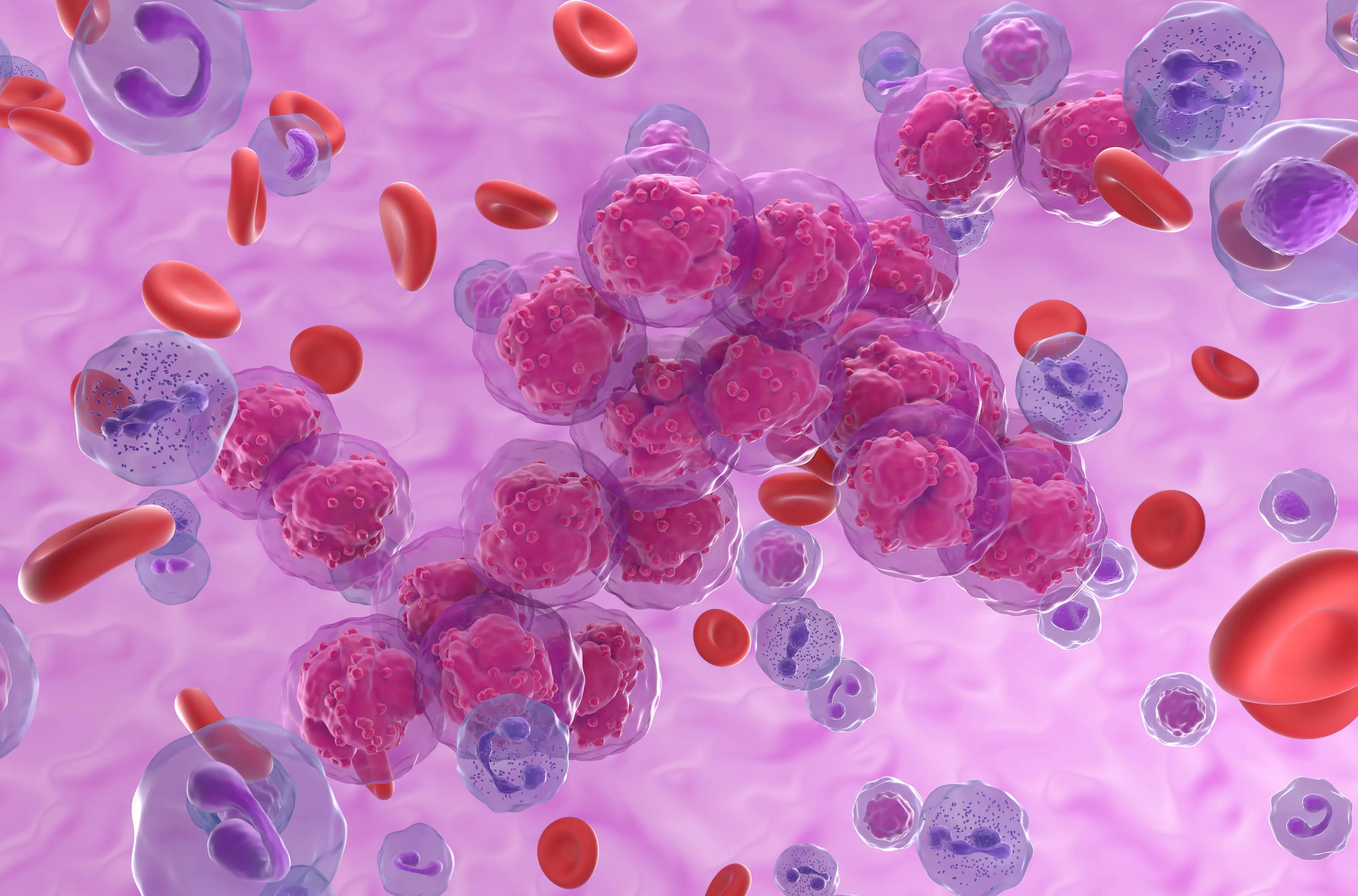- Center on Health Equity & Access
- Clinical
- Health Care Cost
- Health Care Delivery
- Insurance
- Policy
- Technology
- Value-Based Care
Base-Edited T Cells Could Minimize Immunotherapy Complications in Leukemia, Study Suggests
The use of base editing to generate universal, off-the-shelf CAR T cells is a promising approach for relapsed leukemia, with potential implications for the future of gene therapy.
This article was originally published by Pharmacy Times®.
New research in clustered regularly interspaced short palindromic repeats (CRISPR) technology suggests that base-edited T cells could be useful in patients with relapsed leukemia and could help anticipate the risks of immunotherapy-related complications.
Image credit: LASZLO | stock.adobe.com

Researchers have previously established that cytidine deamination guided by CRISPR can enable an extremely precise conversion of cytosine into thymine without generating breaks in the DNA. This method allows genes to be base-edited and rendered inactive without translocations and other chromosomal aberrations and is being investigated in patients with relapsed pediatric T-cell leukemia.
Most children with T-cell acute lymphoblastic leukemia (ALL) can be treated with standard chemotherapy regimens, but patients with induction failure or elevated minimal residual disease after consolidation generally receive allogeneic stem-cell transplantation. Patients who relapse after transplantation have a poor prognosis, with less than 15% long-term survival. For these patients, cellular immunotherapy could help achieve deep leukemic clearance, although chimeric antigen receptor (CAR) T-cell strategies against T-cell cancers have been difficult.
In the phase 1 study, investigators used base editing to generate universal, off-the-shelf CAR T cells. The team transduced healthy volunteer donor T cells using a lentivirus to express a CAR with specificity for CD7, which is expressed in T-cell ALL.
The investigators then used base editing to inactivate 3 genes encoding CD52 and CD7 receptors and the b chain of the ab T-cell receptor to evade lymphodepleting serotherapy, CAR7 T-cell fratricide, and graft-versus-host disease, respectively. These edited cells were investigated in 3 children with relapsed leukemia.
Patient 1 is a 12-year-old girl with T-cell ALL with chromosomal translocation t(10;11) and deletion of chromosome 9p. She had a poor response to induction chemotherapy but achieved morphologic remission after multiple lines of additional treatment including nelarabine; however, she did have detectable minimal residual disease.
The patient was 13 years of age by the time she received the study treatment. Before undergoing lymphodepletion, 9% blasts were detectable in bone marrow and 0.3% blasts were observed immediately before infusion of 50x106 BE-CAR7 cells.
There were no immediate infusion-related events, but a fever developed on day 2 followed by hypotension. Fluid boluses were administered without additional interventions for grade 2 cytokine release syndrome (CRS). The patient also had cytopenia from day 0 onward and was dependent on blood and platelet support.
BE-CAR7 were detected in peripheral blood during a period in which the patient had very low absolute lymphocyte subset counts. Molecular chimerism analysis also confirmed the presence of BE-CAR7 cells, which the study said accounted for most of circulating mono-nuclear cells during the 28 days after infusion.
On day 27, the patient’s bone marrow was hypocellular and in morphologic remission with undetectable minimal residual disease and she was discharged 52 days after stem-cell transplantation. Bone marrow analysis at 9 months post-transplant showed normal morphologic characteristics and confirmed ongoing molecular remission.
Patient 2 was a 13-year-old boy with a diagnosis of cortical T-cell ALL 3 years prior to study enrollment, who had relapsed while receiving maintenance treatment. Despite reinduction therapy and 2 blocks of high-intensity chemotherapy, he had refractory disease that manifested as persistent cytopenia with more than 80% blasts in bone marrow, all of which were expressing CD7. He underwent lymphodepletion and received 1x106 BE-CAR7 T cells per kilogram.
Ongoing neutropenia and lymphopenia were challenges throughout the investigational period, and BE-CAR7 T cells were detected at serial time points in blood, marrow, and pleural fluid. Progressive lung complications from overlapping Aspergillus niger infection resulted in death on day 33.
Finally, patient 3 is a 15-year-old boy who first presented with mixed-phenotype acute leukemia in 2016 and underwent a first allogeneic stem cell transplantation from a matched unrelated donor. Despite receiving 2 donor lymphocyte infusions, the disease relapsed and he received a second allogeneic stem cell transplant in 2017. After relapse in the bone marrow, the disease switched from mixed-phenotype acute leukemia to CD7-positive T-cell ALL.
Lymphodepletion was administered and BE-CAR7 T cells were infused at a dose of 0.9x106 per kilogram. Transient grade 2 CRS was noted due to a transient rash and elevated levels of interleukin and ferritin. The patient was administered 2 doses of tocilizumab.
BE-CAR7 T cells were detected in blood and marrow at serial time points. Bone marrow assessments at day 28 showed complete morphologic and molecular remission, which allowed the patient to progress to a consolidative matched, unrelated donor allogeneic stem-cell transplant.
Based on these findings, the investigators said this represents a proof-of-concept study supporting base editing as a therapeutic approach. The data are consistent with the antileukemic effects of allogeneic CAR T cells, which are sufficient for achieving remission and deep clearance of the T-cell ALL. Notably, however, this approach carries significant risks associated with the immunosuppressive and cytopenic effects.
The investigators aim to recruit 10 children in the United Kingdom for an initial phase 1 cohort further investigating this approach, including the 3 patients described in their interim results. Similar studies are also preparing to begin in the United States, as well as a similar approach using anti-CD33 CAR T cells for deep conditioning prior to allogeneic stem cell transplantation for relapsed acute myeloid leukemia in Europe.
Reference
Chiesa R, Georgiadis C, Qasim W, et al. Use of base editing to create universal CAR T cells for advanced leukemia. N Engl J Med. 2023;389(10):944-953. doi:10.1056/NEJMoa2207848.
